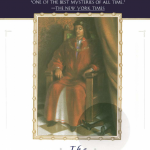In Gaudy Night, the penultimate Peter Wimsey novel, Sayers returns her attention to Lord Peter’s beloved Harriet Vane—almost to the exclusion of Peter himself. As with Have His Carcase, I first read this under the influence of SRDS (Sleuthly Romance Derangement Syndrome); which is to say, I first read it in order to find out what happens to Lord Peter and Harriet, rather than to enjoy the mystery. On that first reading I found it long, confusing, and full of all manner of extraneous hoohaw that simply got in the way of the story, which is to say, it mostly wasn’t about the sleuthly romance.
I came to the book this time, consequently, determined to try to enjoy it for what it was; and enjoy it I did, though with caveats.
The book is largely set at Harriet Vane’s alma mater, Shrewsbury College, Oxford, which is based on Sayer’s own alma mater, Somerville College. Somerville was the first women’s college at Oxford, and the first to admit women as students at that university, and Sayers herself was among the very first women to get an Oxford degree. The notion of women as university students and as Oxford dons was still quite new, and the subject of a great deal of discussion amongst the academics of Oxford, both within and without the walls of Somerville—excuse me, Shrewsbury. This debate is front and center, being one of the things that truly drives the novel, yet to the ears of our very different age it seems overwrought at best and quaint at worst. To enjoy the book, then, means taking not only the book but its time for what it is, and being willing to enter into its concerns and take them seriously.
The action begins when Vane returns to Shrewsbury College for the first time after many years to attend a kind of reunion called a “Gaudy”, which in this context comes from the Latin gaudium, and refers to joy and merrymaking. While there she finds two poison pen letters, one addressed to her and one to another. Later she’s called in by the warden of the college; it seems that many of the dons of the college have received such messages. It has to be someone in residence at the college, which means one of the dons. In the mean time, the writer of the letters is growing more demonstrative and more destructive. Because it would be harmful to the college’s reputation if it came out, the warden asks Vane, a member of the college, to investigate on the strength of her abilities as a mystery novelist and her past work with Peter Wimsey.
What I liked most about the book are the dons of Shrewsbury, a wide and varied collection, depicted with a sharp and discerning eye; Sayers was clearly writing from experience.
Oh, and yes: Peter Wimsey does come in, just at the end.












